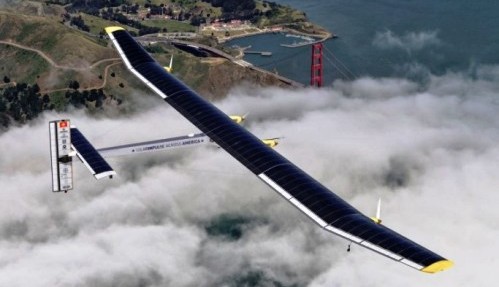The Journey Begins
on

The wind was set fair on Monday so Solar Impulse 2 lifted off from Abu Dhabi on the first leg of its around the world flight. The top surface of the aircraft’s 72 meter wing is fitted with 17,248 solar cells which power the four electric motors. Power from the cells is also stored in lithium-ion batteries to provide energy for the motors during night flying which will be necessary for some of the legs. Transits over the Pacific and Atlantic Ocean are thought to be the most risky legs, requiring the craft to stay aloft for 5 days and 5 nights. The entire circumnavigation is split into 12 legs.
The total distance to cover is something like 21,700 miles and with a top speed of around 28 mph it will take around 30 flying days which will be spread over a five month period. The plane’s cruising altitude will normally be around 28,000 feet during daytime, dropping to 5,000 feet at night when it is necessary to cross oceans. The aircraft uses carbon fibre components, and weighs 5,070 pounds. Co-founders of the Solar Impulse company André Borschberg and Bertrand Piccard will share piloting duties The purpose of the journey is to test the technology and spread the word about the viability of sustainable energy sources. Now with the first leg successfully completed I don’t think we can expect the fragile Solar Impulse2 to be performing any victory rolls when it finally finishes the journey and gets back to Abu Dhabi in five months time. Click here to follow their progress.


Discussion (0 comments)